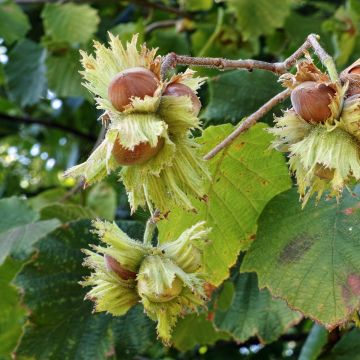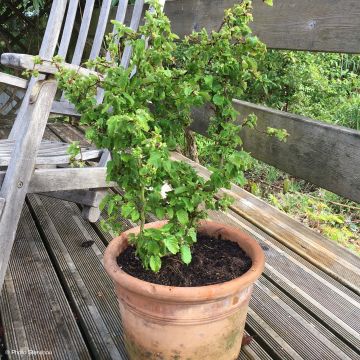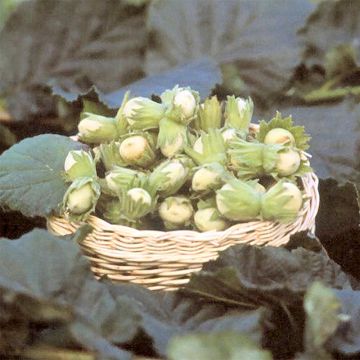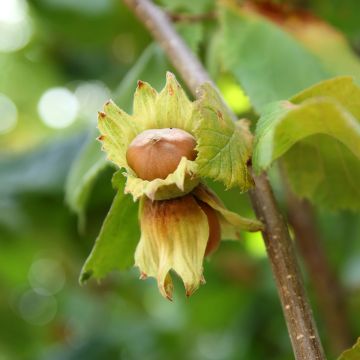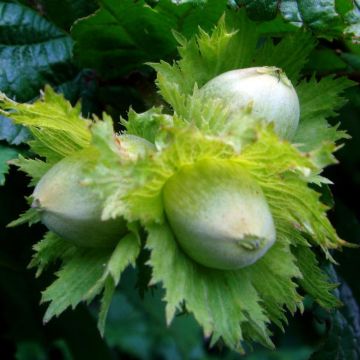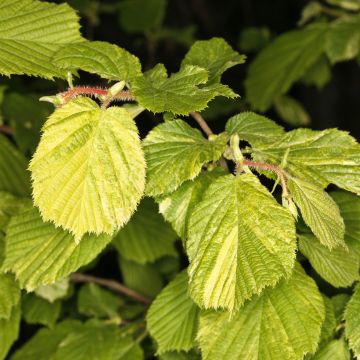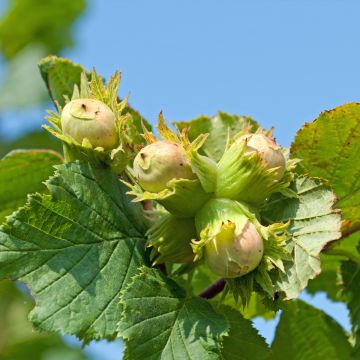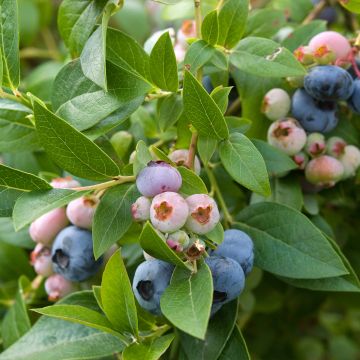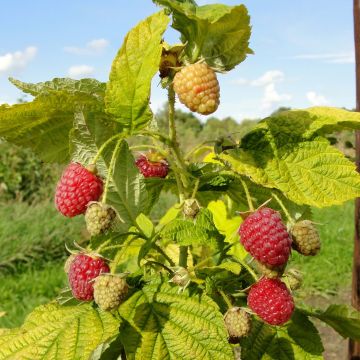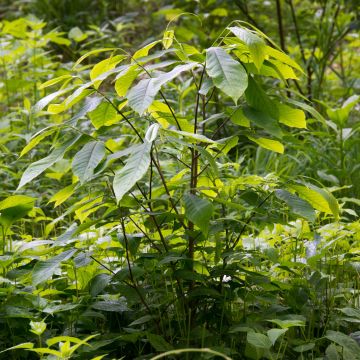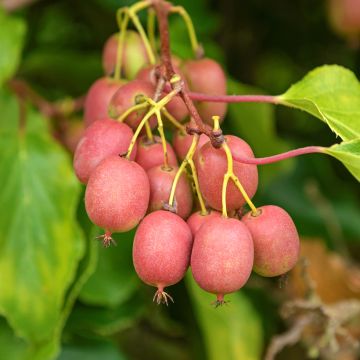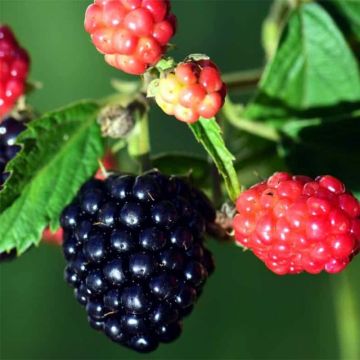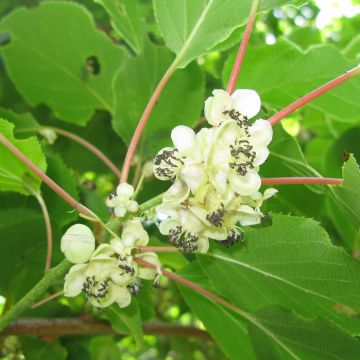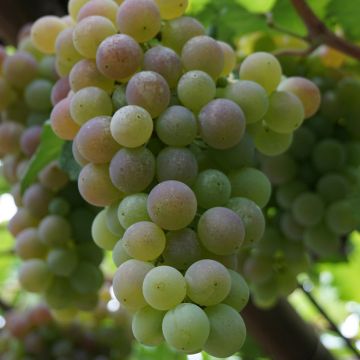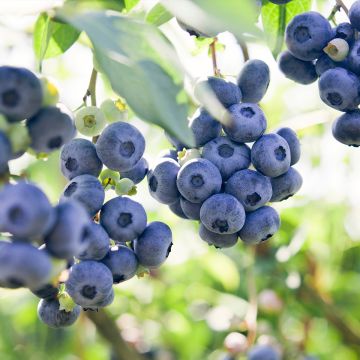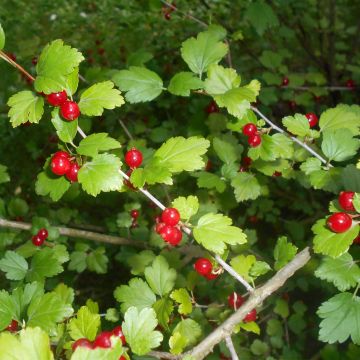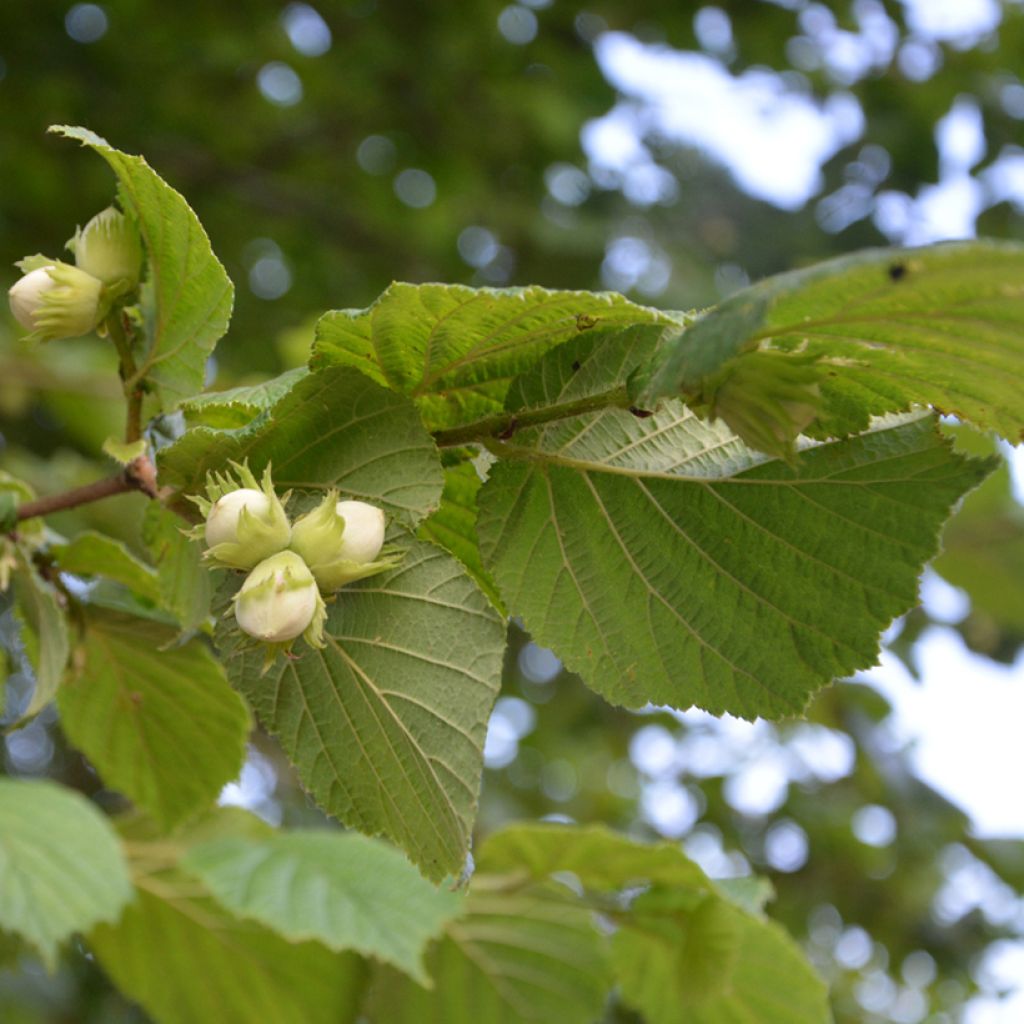

Hazel Merveille de Bollwiller - Corylus maxima
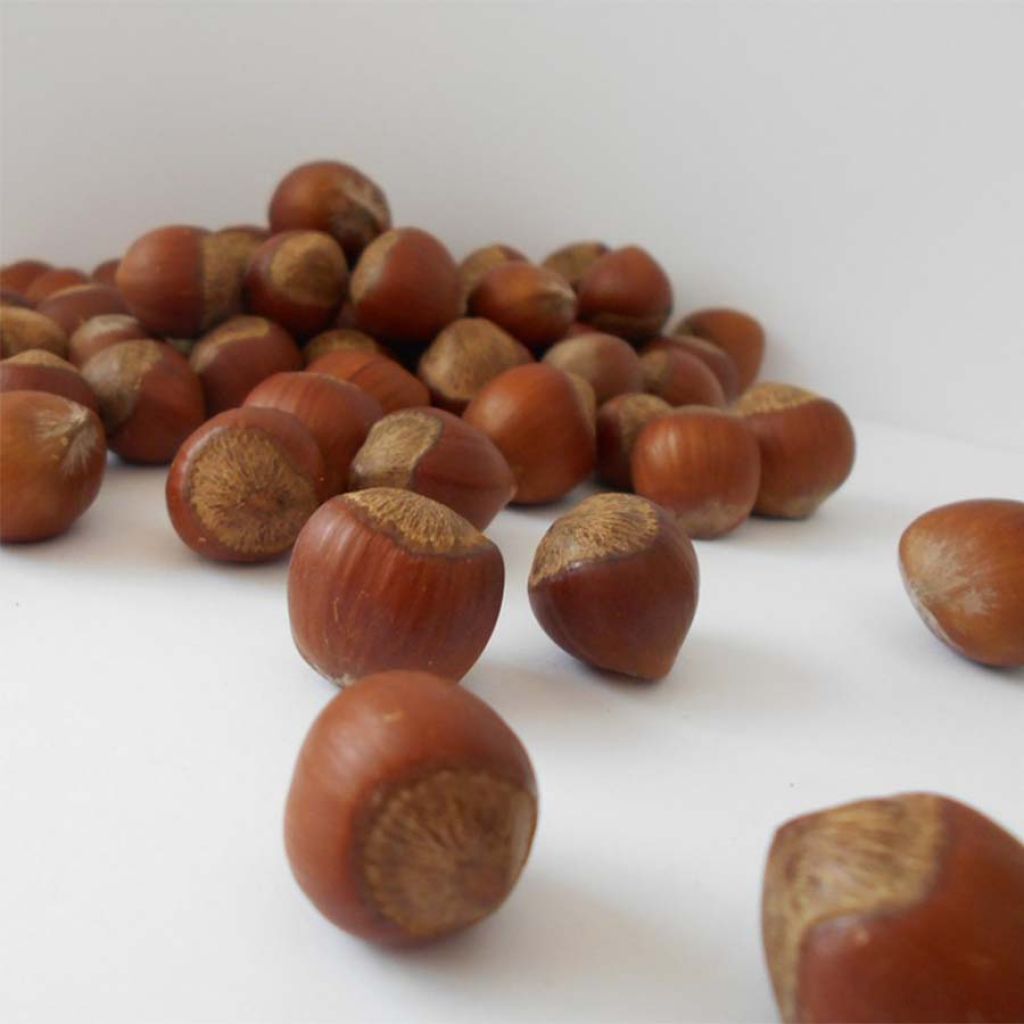

Hazel Merveille de Bollwiller - Corylus maxima
Hazel Merveille de Bollwiller - Corylus maxima
Corylus maxima Géant de Halle
Filbert, Cobnut
This item cannot be shipped to the selected country
Delivery charge from €5.90
Delivery charge from €5.90
Delivery charge from €5.90
Delivery charge from €5.90
More information
Schedule delivery date,
and select date in basket
This plant carries a 6 months recovery warranty
More information
We guarantee the quality of our plants for a full growing cycle, and will replace at our expense any plant that fails to recover under normal climatic and planting conditions.
From €5.90 for pickup delivery and €6.90 for home delivery
Express home delivery from €8.90.
From €5.90 for pickup delivery and €6.90 for home delivery
Express home delivery from €8.90.
From €5.90 for pickup delivery and €6.90 for home delivery
Express home delivery from €8.90.
From €5.90 for pickup delivery and €6.90 for home delivery
Express home delivery from €8.90.

Description
The Halls Giant Hazelnut, also known as Merveille de Bollwiller, is a particularly vigorous and hardy variety that produces at a young age. It produces large round hazelnuts, ending in a point. Their shell is quite tender. The flesh of the almond is white, fragrant, sweet, and delicious when eaten fresh. Harvest takes place in late September and October. Late and hardy, this variety is particularly suitable for cold regions. It is not self-fertile, so be sure to plant another variety nearby.
Hazelnut, in Latin Corylus maxima, belongs to the Betulaceae family, just like birch. It is native to southeastern Europe and the Caucasus. It is a medium-sized fruit tree, monoecious, bearing separate male and female inflorescences on the same individual. This purple hazelnut prefers light and neutral soil, quite fertile, not too dry. Locations that are too hot and dry should be avoided. The Halls Giant Hazelnut is an old German variety, discovered by C. G. Bultner in Halle.
The hazelnut tree produces a trunk composed of a clump of about ten branches that can reach up to 5m (16ft) in height. Its brown bark can peel off in thin strips. Its heart-shaped leaves are toothed with a pointed tip. The green foliage is deciduous and falls in autumn. Monoecious, the hazelnut tree produces male flowers, yellow aments of 6cm (2in), and female flowers, very condensed, upright spikes.
The hazelnuts are generally grouped in small clusters of two or three fruits. Just before the fruit ripens, the shell appears. It hardens and changes colour, while the almond concentrates sugars, oil, and minerals. This ripening occurs in autumn, and harvesting takes place at the end of September and in October, when the hazelnuts easily detach from the branches.
Hazelnuts are commonly consumed as a dried fruit. They are also used in pastries and confectionery: grated into powder, crushed, or cut into flakes. They can also be pressed for oil, although it is prone to rancidity. This fruit is rich in omega-9, vitamin E, and vitamin B.
Report an error about the product description
Plant habit
Fruit
Flowering
Foliage
Safety measures
Botanical data
Corylus
maxima
Géant de Halle
Betulaceae
Filbert, Cobnut
Cultivar or hybrid
atteinterespiratoire
Cette plante peut entraîner des symptômes allergiques.
Evitez de la planter si vous ou vos proches souffrez de rhinite saisonnière ("rhume des foins").
Davantage d'informations sur https://plantes-risque.info
Other Fruit-bearing Hazelnut trees
Planting and care
Plant the Hazelnut Halls Giant during a frost-free period. If your soil is very heavy with clay, balance it with a little gravel. Enrich the planting hole with some well-decomposed compost. Pruning should only be done after the first 2 years. It consists of removing any troublesome or crossing branches. To maintain a beautiful habit for your bushes, limit the diameter of your sections. To promote good fruiting, you can, after a few years, remove the oldest branches from the ground up. If you want to train your hazelnut as a hedge, more severe pruning will not weaken it. Harvesting takes place for this variety from mid-August. If you pick them too early, still on the tree, your hazelnuts will be extremely fresh but somewhat bland. Wait for them to fall to the ground to have all flavour.
Planting period
Intended location
Care
-
, onOrder confirmed
Reply from on Promesse de fleurs
Berries
Haven't found what you were looking for?
Hardiness is the lowest winter temperature a plant can endure without suffering serious damage or even dying. However, hardiness is affected by location (a sheltered area, such as a patio), protection (winter cover) and soil type (hardiness is improved by well-drained soil).

Photo Sharing Terms & Conditions
In order to encourage gardeners to interact and share their experiences, Promesse de fleurs offers various media enabling content to be uploaded onto its Site - in particular via the ‘Photo sharing’ module.
The User agrees to refrain from:
- Posting any content that is illegal, prejudicial, insulting, racist, inciteful to hatred, revisionist, contrary to public decency, that infringes on privacy or on the privacy rights of third parties, in particular the publicity rights of persons and goods, intellectual property rights, or the right to privacy.
- Submitting content on behalf of a third party;
- Impersonate the identity of a third party and/or publish any personal information about a third party;
In general, the User undertakes to refrain from any unethical behaviour.
All Content (in particular text, comments, files, images, photos, videos, creative works, etc.), which may be subject to property or intellectual property rights, image or other private rights, shall remain the property of the User, subject to the limited rights granted by the terms of the licence granted by Promesse de fleurs as stated below. Users are at liberty to publish or not to publish such Content on the Site, notably via the ‘Photo Sharing’ facility, and accept that this Content shall be made public and freely accessible, notably on the Internet.
Users further acknowledge, undertake to have ,and guarantee that they hold all necessary rights and permissions to publish such material on the Site, in particular with regard to the legislation in force pertaining to any privacy, property, intellectual property, image, or contractual rights, or rights of any other nature. By publishing such Content on the Site, Users acknowledge accepting full liability as publishers of the Content within the meaning of the law, and grant Promesse de fleurs, free of charge, an inclusive, worldwide licence for the said Content for the entire duration of its publication, including all reproduction, representation, up/downloading, displaying, performing, transmission, and storage rights.
Users also grant permission for their name to be linked to the Content and accept that this link may not always be made available.
By engaging in posting material, Users consent to their Content becoming automatically accessible on the Internet, in particular on other sites and/or blogs and/or web pages of the Promesse de fleurs site, including in particular social pages and the Promesse de fleurs catalogue.
Users may secure the removal of entrusted content free of charge by issuing a simple request via our contact form.
The flowering period indicated on our website applies to countries and regions located in USDA zone 8 (France, the United Kingdom, Ireland, the Netherlands, etc.)
It will vary according to where you live:
- In zones 9 to 10 (Italy, Spain, Greece, etc.), flowering will occur about 2 to 4 weeks earlier.
- In zones 6 to 7 (Germany, Poland, Slovenia, and lower mountainous regions), flowering will be delayed by 2 to 3 weeks.
- In zone 5 (Central Europe, Scandinavia), blooming will be delayed by 3 to 5 weeks.
In temperate climates, pruning of spring-flowering shrubs (forsythia, spireas, etc.) should be done just after flowering.
Pruning of summer-flowering shrubs (Indian Lilac, Perovskia, etc.) can be done in winter or spring.
In cold regions as well as with frost-sensitive plants, avoid pruning too early when severe frosts may still occur.
The planting period indicated on our website applies to countries and regions located in USDA zone 8 (France, United Kingdom, Ireland, Netherlands).
It will vary according to where you live:
- In Mediterranean zones (Marseille, Madrid, Milan, etc.), autumn and winter are the best planting periods.
- In continental zones (Strasbourg, Munich, Vienna, etc.), delay planting by 2 to 3 weeks in spring and bring it forward by 2 to 4 weeks in autumn.
- In mountainous regions (the Alps, Pyrenees, Carpathians, etc.), it is best to plant in late spring (May-June) or late summer (August-September).
The harvesting period indicated on our website applies to countries and regions in USDA zone 8 (France, England, Ireland, the Netherlands).
In colder areas (Scandinavia, Poland, Austria...) fruit and vegetable harvests are likely to be delayed by 3-4 weeks.
In warmer areas (Italy, Spain, Greece, etc.), harvesting will probably take place earlier, depending on weather conditions.
The sowing periods indicated on our website apply to countries and regions within USDA Zone 8 (France, UK, Ireland, Netherlands).
In colder areas (Scandinavia, Poland, Austria...), delay any outdoor sowing by 3-4 weeks, or sow under glass.
In warmer climes (Italy, Spain, Greece, etc.), bring outdoor sowing forward by a few weeks.

































